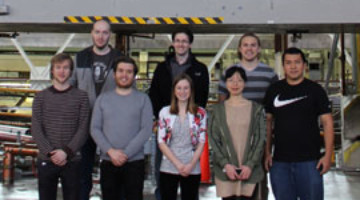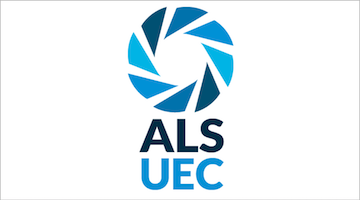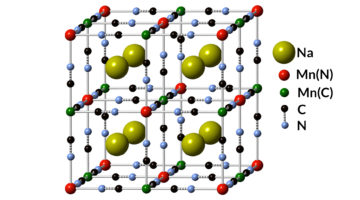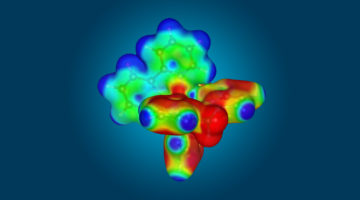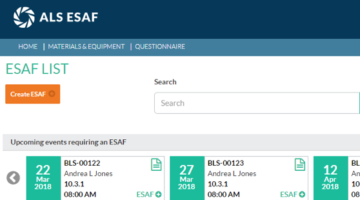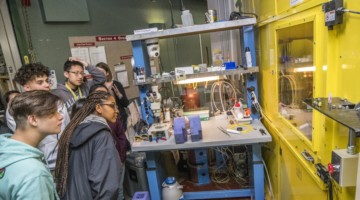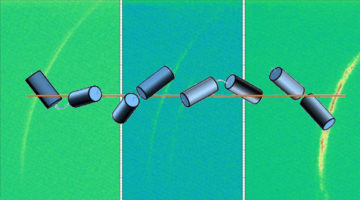On April 23, the ALS hosted a meeting of the five DOE-funded light sources (ALS, SSRL, LCLS, APS, and NSLS-II). These “five-way” meetings, held biannually, bring together representatives from each facility to discuss common interests and issues. Topics of discussion included open data policies, business software, optics and detector development, workforce and career development, and diversity. Read more »
All News & Updates
Share Your Photos to Celebrate the International Day of Light
Lightsources.org, an international collaboration of light sources, is participating in the International Day of Light (May 16) with a photo wall on its website. Users of any of the member facilities, including the ALS, are invited to share a picture of their work, research, or day-to-day life in science on the theme of “light in science.” Read more »
ALS Doctoral Fellowship Applications Due June 30
ALS Doctoral Fellowships in Residence allow early-career researchers to spend a year at the ALS working at the frontier of synchrotron radiation research and helping advance state-of-the-art techniques and applications. Applications will be accepted from June 1–June 30. Read more »
Users’ Executive Committee (UEC) Update
The UEC has elected Fanny Rodolakis (APS, Argonne National Laboratory) as vice chair. She will serve as UEC chair in 2019. Planning for the User Meeting, to be held October 2–4, is now in full swing, and the UEC is pleased to announce a new, full-day tutorial session on October 4 geared towards introducing new users and young scientists to a broad range of ALS techniques. Read more »
Monovalent Manganese for High-Performance Batteries
Scientists have detected a novel chemical state of the element manganese that was first proposed about 90 years ago. The discovery enables the design of a high-performance, low-cost battery that, according to its developers, outperforms Department of Energy goals on cost and cycle life for grid-scale energy storage. Read more »![]()
![]()
Toward Control of Spin States for Molecular Electronics
Researchers demonstrated, via x-ray absorption spectroscopy, that a molecule’s spin state can be reversibly switched at constant room temperature by magnetism. The results represent a major step toward the goal of programmable, nanoscale molecular electronics for high-speed, low-power, logic and memory applications. Read more »![]()
![]()
Experiment Safety Assessment Form (ESAF) to Replace ESS
The ALS is transitioning from the Experiment Safety Sheet (ESS) to the Experiment Safety Assessment Form (ESAF). Although the ESS software will continue to be available for several months, we will encourage most users to use the ESAF system. Follow instructions in your email reminder to access the appropriate system for your beamline. For beam time after April 12, most users will be expected to use the new ESAF tool. Read more »
Local High Schoolers Get “The ALS Experience”
As part of a pilot program to strengthen the STEM career pipeline in the East Bay, Berkeley Lab’s Workforce Development & Education and the Advanced Light Source recently collaborated on a high school study trip. Students from two local high schools worked with scientists at the ALS to design custom experiments and then spent a day at the ALS running their experiments and learning about the ALS and Berkeley Lab. Read more »
Twisted Structures Emerge from Achiral Molecules
The spontaneous formation of chiral structures from achiral molecules could shed light on the origin of biological homochirality—how one type of chirality dominated the other in certain biological molecules. Here, resonant soft x-ray scattering (RSoXS) has been used to explore helical phases that emerge from achiral asymmetric dimers. Read more »
Phase Diagram Leads the Way to Tailored Metamaterial Responses
Researchers discovered an innovative way to independently control two optical responses in a single-material system by utilizing the material’s phase diagram. This unique combination of material, methods, and results could lead to a paradigm shift in the design of metamaterial devices that manipulate light. Read more »![]()
![]()
- « Previous Page
- 1
- …
- 95
- 96
- 97
- 98
- 99
- …
- 139
- Next Page »


